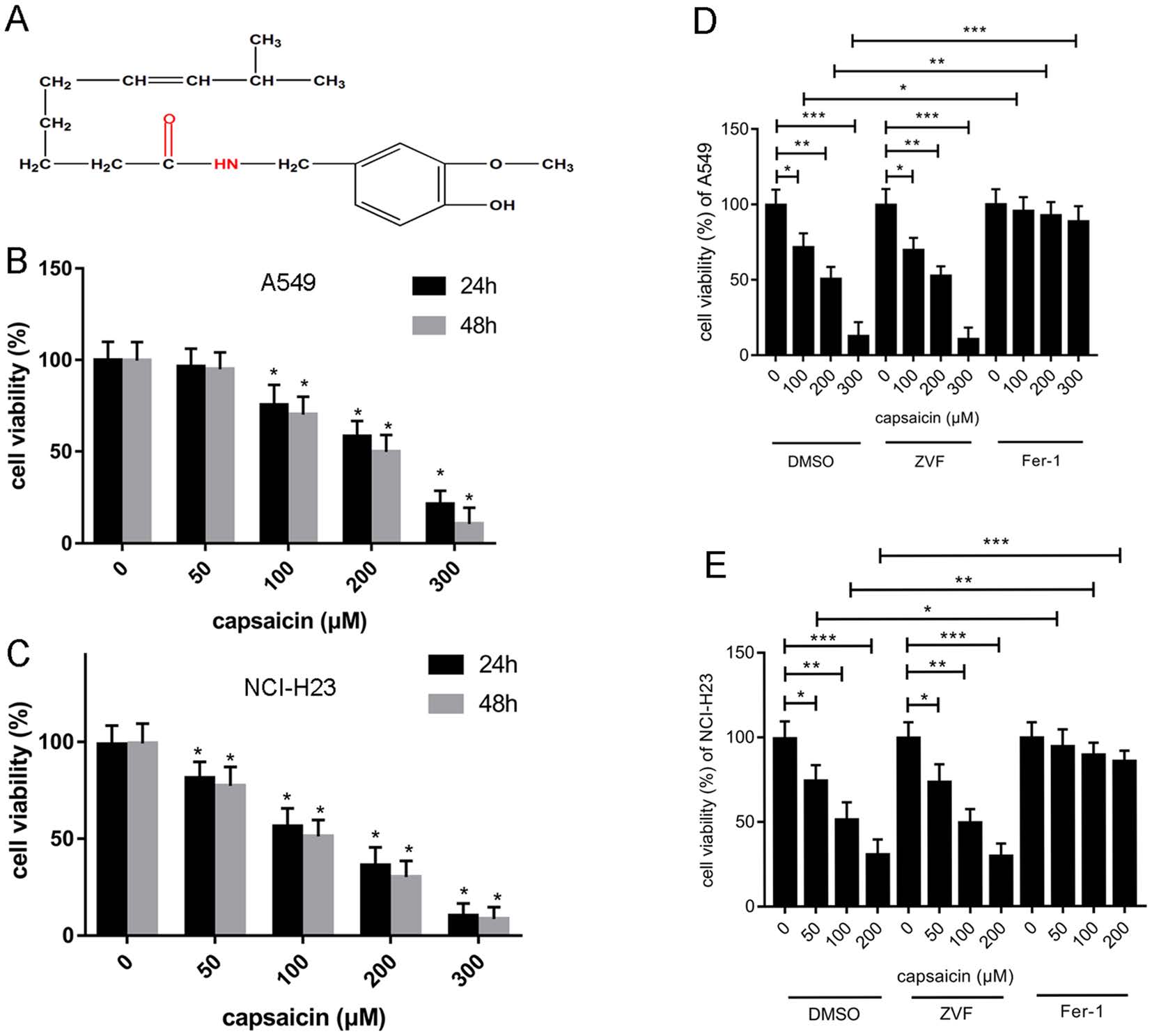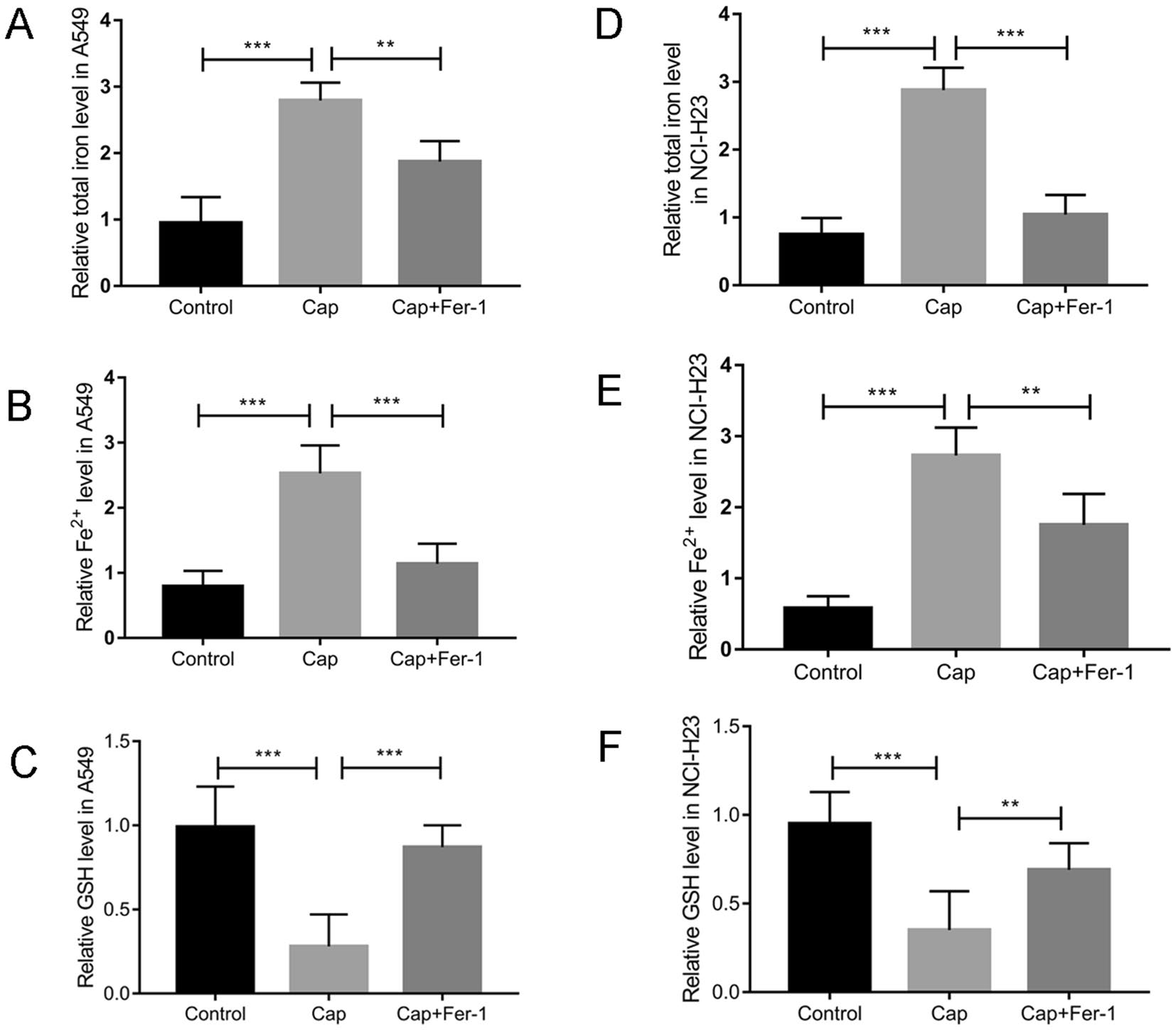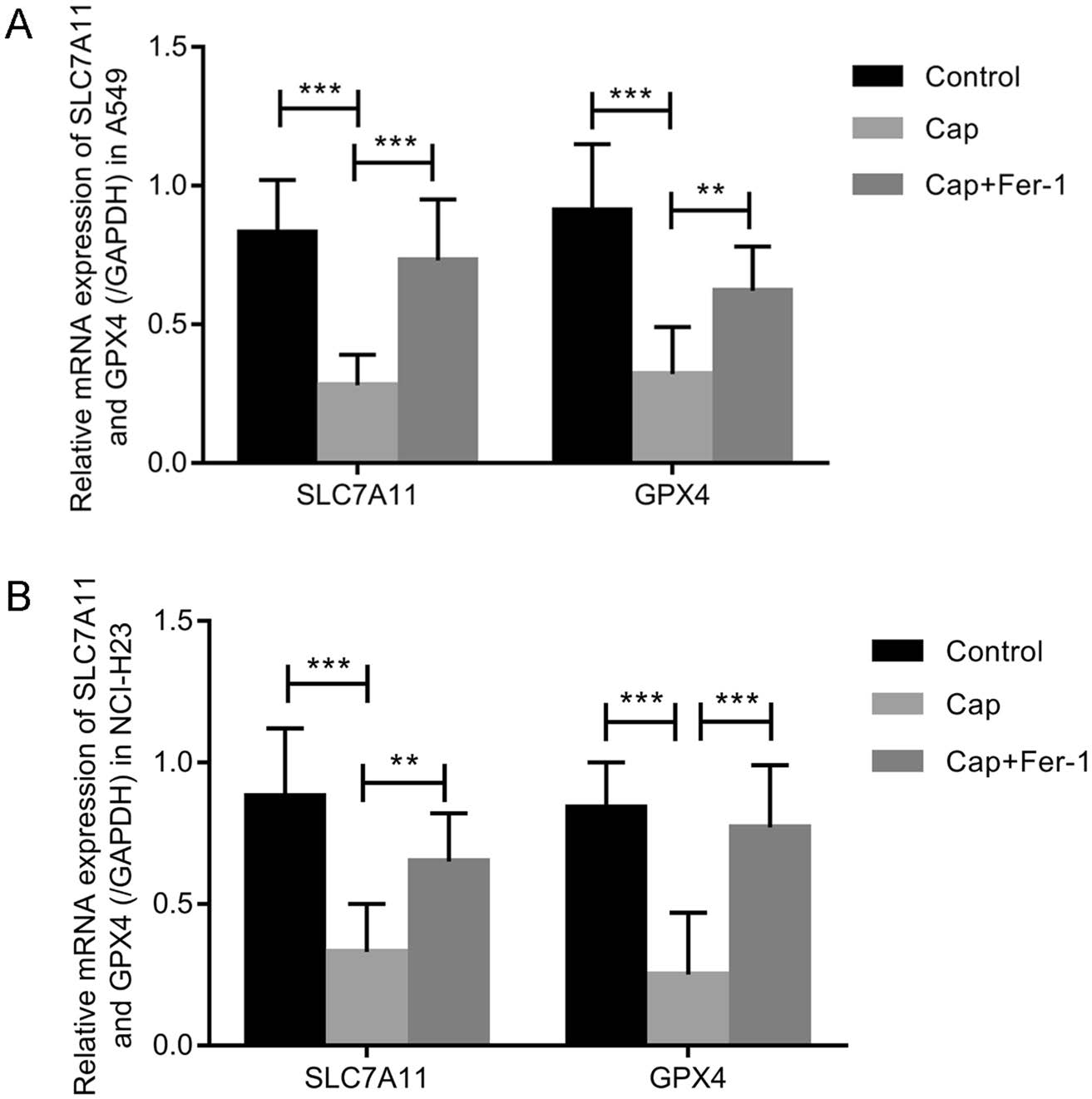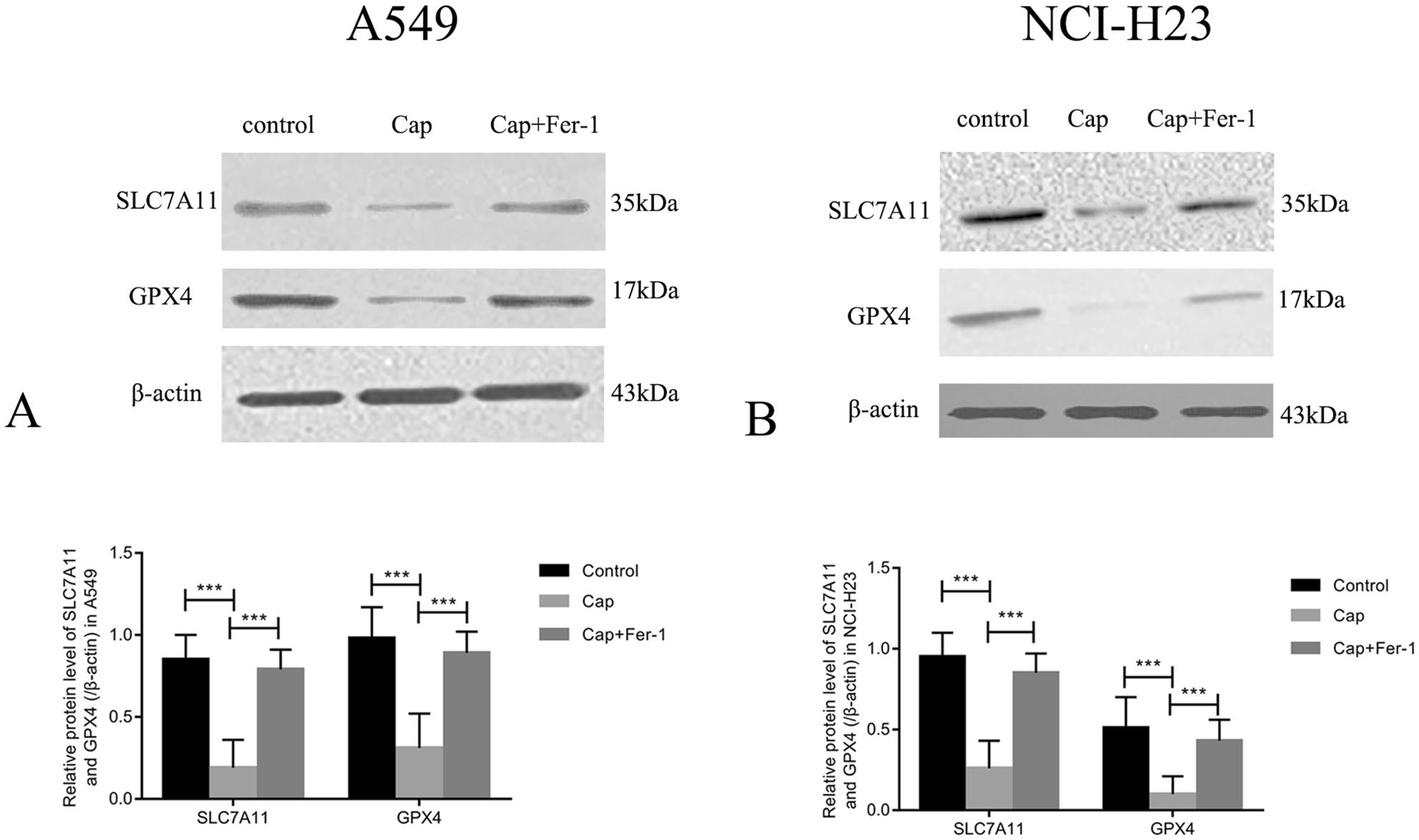Capsaicin induces ferroptosis, or may provide a new therapeutic strategy for NSCLC
Lung cancer is one of the cancers with the highest mortality rate in the world, and non-small cell lung cancer (NSCLC), as its main type, threatens people's health and longevity. Medical experts have carried out a lot of basic research on lung cancer, and have also developed many targeted drugs, but the changes in the disease are always one step ahead, and more new drugs and treatment strategies are urgently needed to deal with it.
Chili is often used as one of the condiments in Chinese food, and its main ingredient is capsaicin. Capsaicin has various medical functions including antioxidant, anti-inflammatory, prevention of cardiovascular disease, and protection of gastrointestinal mucosa. A large number of studies have shown that capsaicin has anti-cancer effects on various malignant tumors in vitro, and in vivo studies have also confirmed that capsaicin has anti-tumor effects. Moreover, the anti-proliferative and cytotoxic effects of capsaicin are only concentrated on malignant cancer cells, without any damage to normal cells, and the side effects are smaller. However, the specific molecular mechanism behind it remains unclear. The scientists evaluated the effects of capsaicin in NSCLC cells, further confirming its function and exploring the underlying mechanisms behind it.
Capsaicin inhibits cell viability of A549 and NCI-H23 in a ferroptosis-dependent manner
Using the A549 and NCI-H23 human lung adenocarcinoma cell lines, they investigated the effect of capsaicin (Fig. 1A) on these two cell lines by MTT, respectively. The results showed that 100 μM, 200 μM and 300 μM capsaicin could significantly reduce the cell viability of A549 at 24 hours and 48 hours, while 50 μM capsaicin had no obvious antiproliferative effect on A549 cells. Capsaicin (200 μM) reduced the viability of A549 cells and reached IC50 at 48 hours (Figure 1B). In addition, 50 μM, 100 μM, 200 μM and 300 μM capsaicin significantly reduced the cell viability of NCI-H23 at both 24 h and 48 h, and NCI-H23 cells reached IC50 at 48 h with 100 μM capsaicin (Figure 1 C). After 48 hours of treatment of cells with ferrostatin-1 and capsaicin, the cell viability of A549 and NCI-H23 was almost unaffected, in contrast to capsaicin alone. Furthermore, the apoptosis inhibitor Z-VAD-FMK could not alleviate the capsaicin-induced decrease in A549 and NCI-H23 cell viability (Fig. 1D,E).

Figure 1 Capsaicin induces ferroptosis in A549 and NCI-H23 cells.
Capsaicin induces ferroptosis in A549 and NCI-H23 cells
Based on the above results, they chose to use capsaicin at a concentration of 200 µM to treat A549 cells for 48h and capsaicin at a concentration of 100 µM to treat NCI-H23 cells for 48h as a follow-up study. After treatment, compared with the control group, A549 and NCI-H23 The levels of total iron and ferrous iron in the cells were significantly increased (Fig. 2A,B,D,E). The total iron and ferrous iron levels in the capsaicin + ferrostatin-1 group were significantly lower than those in the capsaicin group (Fig. 2 A, B, D, E), while the GSH level in the capsaicin group cells was significantly reduced, but not in the capsaicin group. This phenomenon was abolished by co-treatment of A549 and NCI-H23 cells with ferrostatin-1 (Fig. 2C,F).

Figure 2. Changes in total iron levels, Fe 2+ levels, and GSH levels in A549 and NCI-H23 cells.
Capsaicin affects the mRNA and protein levels of SLC7A11 and GPX4
To search for the molecular mechanism of capsaicin-induced ferroptosis, they chose two key signals from the ferroptosis pathway, SLC7A11 and GPX4, as their targets. This study used real-time PCR technology to detect the mRNA levels of SLC7A11 and GPX4 in A549 and NCI-H23 cells treated with capsaicin. As shown in Figure 3A, SLC7A11 and GPX4 mRNA levels were significantly reduced in capsaicin-treated A549 cells, and ferrostatin-1 could reverse this effect. Likewise, capsaicin caused significant changes in the expression levels of SLC7A11 and GPX4 in NCI-H23 cells, and ferrostatin-1 had the same reversal effect (Figure 3B). In addition, the protein levels of SLC7A11 and GPX4 in A549 and NCI-H23 cells were significantly down-regulated in the capsaicin group compared with the control group, and the use of ferrostatin-1 abolished this effect (Fig. 4A,B).

Figure 3. Analysis of SLC7A11 and GPX4 expression by real-time PCR.

Figure 4. Analysis of SLC7A11 and GPX4 expression by Western blot analysis.
Summary and Discussion
As one of the malignant tumors, lung cancer has the highest related morbidity and mortality in the world. However, under current treatment regimens, the 5-year survival rate for lung cancer is only 18%. Among them, NSCLC is the most common pathological type of lung cancer, but only about 20% of NSCLC patients have the opportunity for surgery. The side effects of other therapies other than surgery are also relatively large, so it is urgent to find new cure strategies for NSCLC patients. The scientists studied the effect of different capsaicin concentrations on A549 and NCI-H23 cells (NSCLC cell lines), and determined the IC50 value of capsaicin on A549 cells for 48 h at 200 μM and on NCI-H23 cells by MTT method. Values were 100 μM and 24 h. In addition, ferroptosis and apoptosis are important forms of cell death, after using ferrostatin-1 and Z-VAD-FMK, they further confirmed that the antiproliferative effect of capsaicin on A549 and NCI-H23 cells is mainly due to ferroptosis rather than apoptosis. Among them, iron death was related to total iron level and ferrous iron level. The experimental results showed that the contents of total iron and ferrous iron in A549 and NCI-H23 cells were significantly increased after capsaicin treatment, again confirming that ferroptosis was the cause of capsaicin-induced cell death in A549 and NCI-H23 cells.
To further explore the molecular mechanism of the antiproliferative effect of capsaicin on A549 and NCI-H23 cells, they observed changes in key proteins SLC7A11 and GPX4 involved in the ferroptosis process. SLC7A11 promotes GSH synthesis, counteracts oxidative stress in cells, and inhibits ferroptosis in cancer cells. The results of real-time PCR and Western blot analysis experiments confirmed that the levels of SLC7A11 and GPX4 were significantly reduced in A549 and NCI-H23 cells treated with capsaicin compared with the control group. Capsaicin-mediated downregulation of SLC7A11 and GPX4 plays a critical role in regulating ferroptosis in A549 and NCI-H23 cells. GSH levels were examined and found that GSH levels were significantly reduced in A549 and NCI-H23 cells after capsaicin treatment. It is speculated that capsaicin may induce ferroptosis in A549 and NCI-H23 cells by regulating the SLC7A11/GPX4 axis.
These studies confirm that capsaicin, as a potential anticancer agent, has ferroptosis-induced antiproliferative effects, and may be used for the treatment of NSCLC, thus providing a new therapeutic strategy for NSCLC patients.













Comments